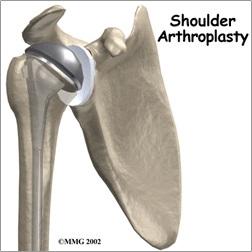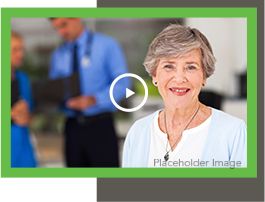Dr. Turner – Reverse Shoulder Replacement
By Dr. William Turner, Longview Orthopedic Associates
The shoulder has a unique role: positioning the hand in space. The remarkable range of motion the normal shoulder enjoys is a result of a unique ball-and-socket design. A large ball at the top end of the arm moves across a relatively small and flat socket.

Reverse Shoulder Replacement
The small size of the socket allows the greatest arc of motion possible, but has a downside-less stability. To provide the stability lacking in the skeletal design, a group of four muscles extend from the shoulder blade and wrap around the ball, keeping it centered on the socket while the larger muscles of the shoulder perform their tasks. These four stabilizing muscles are known as the Rotator Cuff.
Problems arise when the Rotator Cuff is injured or torn. The shoulder ball may not remain centered on the socket, causing pain and reducing the performance of the shoulder. In some cases, usually where a large tear has been present for some time, the ball drifts off center enough that the surface of the joint is damaged, resulting in a type of arthritis known as Cuff Tear Arthropathy (CTA). People with CTA experience shoulder pain, limited motion, and often marked weakness when trying to lift the arm overhead.

Reverse Shoulder Replacement
Treatment for CTA begins with pain relievers and a gentle strengthening program to help the remaining undamaged shoulder muscles substitute for the damaged Rotator Cuff. Some people don’t get enough relief from medicine and exercise, and consider surgery to improve symptoms and restore some of their daily activities.
In the past, orthopedic surgeons have tried to treat Cuff Tear Arthropathy with standard ball-and-socket replacements used for other forms of shoulder arthritis, but the results have not been consistently good.

Shoulder Arthroplasty
Standard shoulder replacements (replacing the ball on the upper arm and re-lining the socket) depend on a healthy Rotator Cuff to hold the new joint in the proper centered position. Without a good Rotator Cuff, standard replacements tend to drift off center and fail.
Researchers knew that if the socket could be deepened, the shoulder ball would be more stable, even without a Rotator Cuff to support it. But there isn’t enough bone below the natural socket on the shoulder blade to make the socket deeper. So a unique solution was developed: the joint is reversed, mounting a ball on the shoulder blade’s socket, and creating a socket atop the upper arm bone.

Shoulder Arthroplasty
Known as Reverse Shoulder Arthroplasty, this new technique has been imported to the United States from Europe in the past few years, and studies have shown that about 90% of patients who have this surgery report marked improvement in pain and better functional strength for activities of daily living. A typical reverse shoulder replacement patient is able to sleep comfortably, place their hand behind their head, and stack plates above shoulder level.
Recovery from the surgery takes several months, but the hospital stay is only a day or two, and the rehabilitation routine is not too challenging or painful. Every surgery has risks and success depends on many factors, so interested patients should discuss the pros and cons with their surgeon.
4 Mentions of "Dr. Turner – Reverse Shoulder Replacement"
- Keith W Davis December 16th, 2009 at 3:39 pm
Hello Dr. Turner,
I have just returned from the Mayo Clinic in Rochester, MN. Just yesterday as a matter of fact. One of the four things wrong with my shoulder is the ball is no longer in its socket. Two of the other things have to do with arthritis and I am not sure what exactly the fourth thing is. I wanted to see if the reverse shoulder replacement would work for me. The doctor at the Mayo basically told me that with all the four things wrong with my shoulder after my injury and my rotator cuff surgery 15 months ago, I will have to deal with and live with the pain I have for the rest of my life. I would like to have you look at his records and see if you agree. Would this be possible?? PLEASE let me know. I am currently taking Aleve and an anti-inflammatory medicine for the pain…the anti-inflammatory has been for the last 5 to 6 weeks…both which he said I must stop or I will eat out the lining of my stomach. PLEASE let me know what you recommend and let me know if there may be any possibility that you may be able to help me. Thank you, Keith Davis
- Dr. Turner December 17th, 2009 at 1:39 pm
The Mayo Clinic deserves it’s reputation as a leading orthopedic center. In many cases, they provide visiting patients with a summary of their evaluation and recommendations. If you would like me to review their findings, I would be happy to do so and then let you know if an additional evaluation would be worth your time.Dr. Turner
- Keith W Davis
December 17th, 2009 at 2:05 pm - Blackstone, Black, Lauder Attend Academy
February 27th, 2011 at 10:04 am
What do you need from me to get things started?

